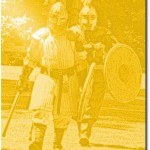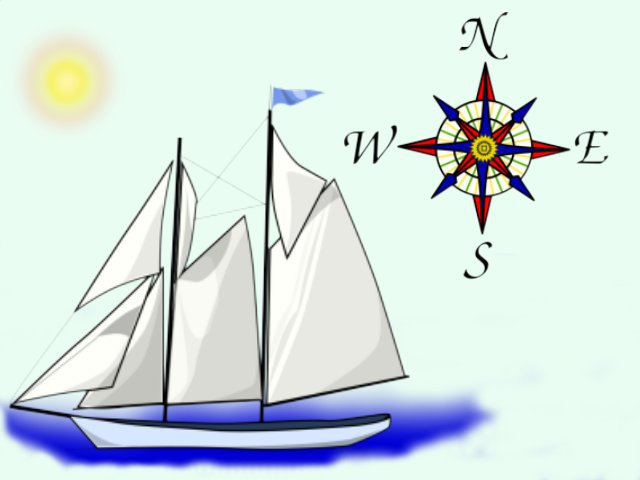Search results
Searching for Immigrant Ancestors
June 16, 2012 by ramona
Filed under Articles, Getting Started in Genealogy, Introduction to Genealogy, Latest News
 Unless you are of aboriginal descent, your ancestors came to North America as immigrants.
Unless you are of aboriginal descent, your ancestors came to North America as immigrants.
Europeans have been making the journey to North American shores since the first recorded settlement by Vikings in L’Anse aux Meadows (Newfoundland, Canada) in 1000 AD. Although colonization truly did not begin until 1492 when Columbus headed his Spanish expedition in search of trade routes and instead found a new land.
In the following centuries, the North American population grew with immigrants of all races and nationalities. From those seeking religious freedoms to those who suffered forced immigration. They came by ship in droves and ever since, we have been looking back, seeking our immigrant ancestors.
The Immigration Brick Wall
For many beginning genealogists this is the point where they first encounter a brick wall in their research. Up to this point, the search for records has been confined to home shores and filling out the spaces on family tree charts has gone relatively smoothly. Then all of a sudden your ancestors disappear from the records… and you do not know where they went.
This is often the point in family history research where new researchers first come across an immigrant ancestor. Unless family bibles and/or stories offer a clue, it leaves researchers asking the questions. Where do I look now, who am I looking for and when did they emigrate?
Immigration and Name Changes
Before you can know where and when to look you will need to know who it is you are looking for. This may sound like a silly statement however; it is not unusual for immigrant ancestors to change their names. Name changes happened for a multitude of reasons from letter combinations and symbols that were not compatible with the English language to a desire to sound more American.
For example, you may have found a family patriarch listed in North American records as John Weaver but if he emigrated from Germany, you may actually need to be searching for Johan Webber.
Where to Begin Your Search
If the ancestor you are hunting for came from overseas, you may not have a birth or marriage record to answer the question of where they came from. Three excellent sources to consult should this be the case are:
- Census Records (which could also give you a clue as to when they emigrated)
- Death Records (if country of birth is not listed the names of listed parent could offer a clue)
- Newspapers (Wedding and anniversary announcements in addition to obituaries often contain biographical information that could aid in pinpointing your ancestors country or birth)
When Did They Emigrate
Your best starting point for unearthing the date of your ancestors emigration is the census records. The first census for the United States was taken before the ratification of the American Constitution in 1790. Since then a Census was taken every ten years.
In Canada, the first census occurred in 1666 in what was then New France. However, the first national census was not taken until 1871 and was followed by subsequent enumerations every five years. Locating the first census your ancestor was found in should help narrow down your search for an emigration year.
Once you have the data your next step is to begin locating records of immigration and ships lists. A visit to Library and Archives Canada or the US National Archives should be your first stop, as they will direct you to further research sources.
Do not forget to sign up for a 30-day free trial membership to Genealogy Beginner and download your complimentary family tree charts and research tracking forms.
Genealogy: Getting to Know Your Ancestors
June 14, 2012 by ramona
Filed under Archives, Family History, Genealogy groups, societies and organizations, Latest News
 The Merriam Webster Dictionary gives a definition of genealogy as:
The Merriam Webster Dictionary gives a definition of genealogy as:
- an account of the descent of a person, family, or group from an ancestor or from older forms
- the study of family pedigrees
Strictly speaking, this is true; it is certainly a good definition of the process and an accurate descriptor of the intent with which genealogy is first approached. However, to those of us who have spent any length of time on this addictive hobby, the study of our ancestors begins to take on new meaning.
It is not long after family tree research begins that the dry definitions become inadequate. As we work our way through record after record, learning piecemeal the details of our ancestors lives we begin to feel we are getting to know them as individuals.
For some, the genealogical aspects of family history research are not enough. We want to get to know our forefathers on a deeper level. Become more familiar with their day-to-day lives.
If you count yourself among those wishing for a deeper understanding of your generations past, there are a number of activities you can participate in; activities that will allow you to experience your family history in a very real way.
Recreationists
Pick almost any period in history and you will find a group of people actively recreating the era. Living history groups include the activities, dress and tools of the eras they portray to give participants the sense of stepping back through time. Recreationists are not re-enactors; they are not scripted nor are they involved in recreating specific events. Member’s interests can include clothing styles, pastimes, cookery and artisanship, everything that would help create a feeling of every day life in bygone days. It is not at all surprising that among their ranks you find many genealogists and family historians.
Living History Groups
From late 20th century groups like “The 20th Century Revisited” A UK based group recreating scenes and events from various parts of the later 20th Century including WW2 resistance, and 1970 British Army of the Rhine (BAOR) or “Paper Dolls” An international group made up of female members who portray military and civilian life during World War Two. From hometown sweethearts, Women’s Land Army, French Resistance, American Red Cross, Women’s Army Corps. These groups offer an opportunity to learn what it was like for ancestors who lived during the great wars; both on and off the battlefield.
If you are more interested in the events of the 19th century The Living History Society of Minnesota members can attend workshops and participate in activities designed to increase their knowledge of mid 19th century life. For those whose Gr,Gr,Gr, Grandfathers heeded the familiar call of “Go West young Man” the Mojave Muleskinners have several branches across the US, Canada and the UK where you can immerse yourself and learn about life in the old west.
If you can trace your family tree to medieval times, a living history group from the Middle Ages may be more suiting. The Society for Creative Anachronism (SCA) is an international organization with over 30,000 members residing in countries around the world. One of the best things about this group is that you will find a mix of cultures from Viking to Italian to Middle Eastern. Members attend events such as tournaments, royal courts, feasts, dancing, various classes, workshops and more. The SCA is a group that lets you explore all of the European lines in your family tree.
If you want to know more about how living history groups can help enrich your genealogy and family history or how to find a group near you, just post a question to the Genealogy in General board on the Genealogy Beginner forums.
Why Learn Genealogy?
April 27, 2012 by ramona
Filed under Articles, Getting Started in Genealogy, Introduction to Genealogy, Latest News
 Have you ever wondered why genealogy and family history research is so popular? What is it that drives people to spend so much of their money and time pursuing their ancestral past?
Have you ever wondered why genealogy and family history research is so popular? What is it that drives people to spend so much of their money and time pursuing their ancestral past?
On a personal level it may start with a question of self-identity “Who am I?” or a need to know where we belong “Where do I come from?”
In 1964 psychologist H. J. Sants, coined the term “Genealogical Bewilderment” in describing identity issues in adoptees, Sants theory declared that adopted children experienced a greater degree of stress than children raised by their genetic parents due to an absence of knowledge of their origins.
In 1952 a letter was written to the Journal of Mental Health by psychiatrist E. Wellisch, titled “Children without genealogy: The problem of adoption” in which he said:
“Knowledge of and definite relationship to his genealogy is … necessary for a child to build up his complete body image and world picture. It is an inalienable and entitled right of every person. There is an urge, a call, in everybody to follow and fulfill the tradition of his family, race, nation, and the religious community into which he was born. The loss of this tradition is a deprivation which may result in the stunting of emotional development.”
While not everyone who engages in genealogy as a hobby is suffering from an identity crisis, there is still an echo of truth in these words.
Perhaps we feel a little disengaged from the far off shores of our homelands or maybe the answer lies in the theory of ancestral memory as expressed by Carl Jung’s “collective unconscious”, Freud’s “archaic remnants” or the more modern idea of “genetic memory”. All theories which at their heart suggest that within each individual is a body of knowledge or a memory passed down through our ancestors.
Speculation and pseudoscience aside there is no doubt that genealogy has become a popular hobby. The most current report on market trends for genealogy by Global Industry Analysts, Inc. (statistics as of January 11, 2012) show that between US$1000 to US$18000 is spent per year on genealogy research by over 84 million genealogists.
Ultimately, the why of genealogy research can only be answered by the individual pursuing it and perhaps it is best left at that. However, one thing all of us addicted to climbing our family trees can agree on is that it is one of the most rewarding hobbies around.
If you are ready to begin learning about your family tree start here at Genealogy Beginner.
Ancestry Search
 If you want to understand the information contained in public records, it’s a good idea to do a little preparation. One of the best instructional resources on using public records for family history research is the The Basic Beginner’s Genealogy Guide from Genealogy Beginner. Chapter four of this guide is appropriately titled, “Searching Genealogy Public Records.”
If you want to understand the information contained in public records, it’s a good idea to do a little preparation. One of the best instructional resources on using public records for family history research is the The Basic Beginner’s Genealogy Guide from Genealogy Beginner. Chapter four of this guide is appropriately titled, “Searching Genealogy Public Records.”
One of your best resources for genealogy research is your local pubic library. Local libraries have access to online genealogy databases that may contain valuable information about your family. Librarians can significantly reduce research time by pointing you toward the resources that best fit your research needs.
You can also find a great deal of genealogy information by writing to the Social Security Administration and requesting information about family names, applications for citizenship, and birth dates. The Census Bureau has records dating back to 1745. You’ll also find birth announcements through the Office of Vital Records or by contacting local courthouses directly. These are just some of the leads you’ll find when you lean more about The Basic Beginner’s Genealogy Guide.
…
Where to Next?
Blank Family Tree with Step-by-Step Instructions
…

